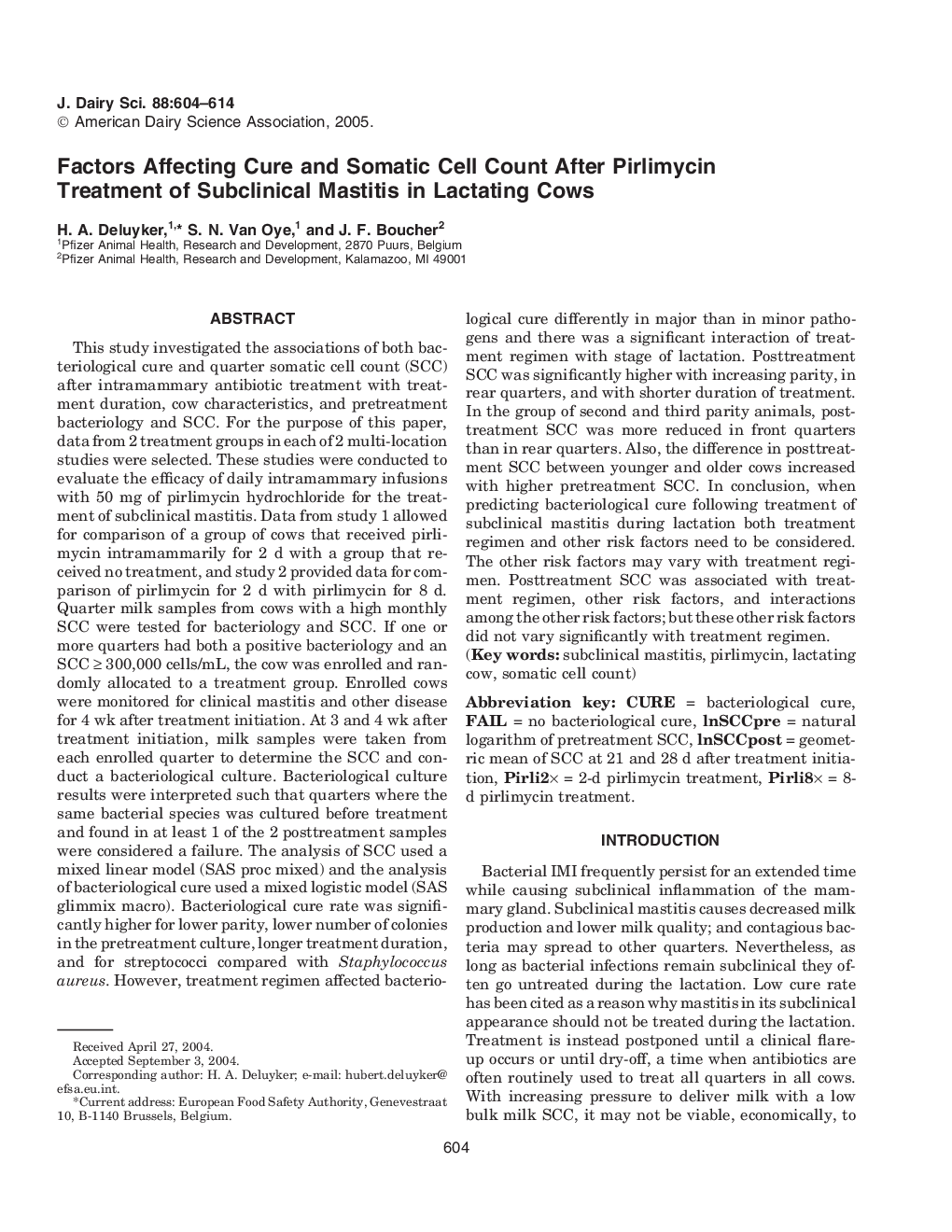| Article ID | Journal | Published Year | Pages | File Type |
|---|---|---|---|---|
| 8981181 | Journal of Dairy Science | 2005 | 11 Pages |
Abstract
This study investigated the associations of both bacteriological cure and quarter somatic cell count (SCC) after intramammary antibiotic treatment with treatment duration, cow characteristics, and pretreatment bacteriology and SCC. For the purpose of this paper, data from 2 treatment groups in each of 2 multi-location studies were selected. These studies were conducted to evaluate the efficacy of daily intramammary infusions with 50 mg of pirlimycin hydrochloride for the treatment of subclinical mastitis. Data from study 1 allowed for comparison of a group of cows that received pirlimycin intramammarily for 2 d with a group that received no treatment, and study 2 provided data for comparison of pirlimycin for 2 d with pirlimycin for 8 d. Quarter milk samples from cows with a high monthly SCC were tested for bacteriology and SCC. If one or more quarters had both a positive bacteriology and an SCC â¥300,000 cells/mL, the cow was enrolled and randomly allocated to a treatment group. Enrolled cows were monitored for clinical mastitis and other disease for 4 wk after treatment initiation. At 3 and 4 wk after treatment initiation, milk samples were taken from each enrolled quarter to determine the SCC and conduct a bacteriological culture. Bacteriological culture results were interpreted such that quarters where the same bacterial species was cultured before treatment and found in at least 1 of the 2 posttreatment samples were considered a failure. The analysis of SCC used a mixed linear model (SAS proc mixed) and the analysis of bacteriological cure used a mixed logistic model (SAS glimmix macro). Bacteriological cure rate was significantly higher for lower parity, lower number of colonies in the pretreatment culture, longer treatment duration, and for streptococci compared with Staphylococcus aureus. However, treatment regimen affected bacteriological cure differently in major than in minor pathogens and there was a significant interaction of treatment regimen with stage of lactation. Posttreatment SCC was significantly higher with increasing parity, in rear quarters, and with shorter duration of treatment. In the group of second and third parity animals, post-treatment SCC was more reduced in front quarters than in rear quarters. Also, the difference in posttreatment SCC between younger and older cows increased with higher pretreatment SCC. In conclusion, when predicting bacteriological cure following treatment of subclinical mastitis during lactation both treatment regimen and other risk factors need to be considered. The other risk factors may vary with treatment regimen. Posttreatment SCC was associated with treatment regimen, other risk factors, and interactions among the other risk factors; but these other risk factors did not vary significantly with treatment regimen.
Related Topics
Life Sciences
Agricultural and Biological Sciences
Animal Science and Zoology
Authors
H.A. Deluyker, S.N. Van Oye, J.F. Boucher,
